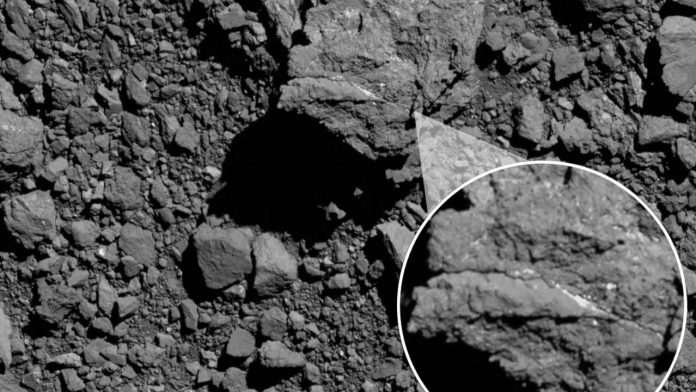Researchers have discovered a treasure trove of data during the OSIRIS-REx mission, including the presence of water and traces of organic material, which may well seed life on planets such as our own across the galaxy.
According to Amy Simon, of NASA’s Goddard Space Flight Center, “carbon-bearing, organic material” is littered across Bennu’s surface. These signs indicate that organic material itself is likely to be found when the asteroid samples are returned to Earth for analysis.
Indeed, NASA scientists suspect that some of the samples from Bennu may not resemble any of the meteorite samples humanity has collected on Earth up until this point, and that the organic matter contained therein may point to the development of primitive biology across the universe.
Once back on Earth, detailed analysis will be carried out in the hope of answering questions about the origins of both water and life itself here on Earth.
“The abundance of carbon-bearing material is a major scientific triumph for the mission. We are now optimistic that we will collect and return a sample with organic material – a central goal of the OSIRIS-REx mission,” said Dante Lauretta, OSIRIS-REx’s principal investigator.
Elsewhere in the research, an abundance of carbonate minerals were located in the asteroid’s geology, which suggest extensive hydrothermal systems, containing both water and carbon dioxide, throughout Bennu and its now-deceased parent asteroid.
This adds further credence to the theory that asteroids may work as some form of seeder for life across the universe.
NASA has also now managed to create a 3D digital terrain model of Bennu, which it’s described as “a diamond-shaped pile of rubble floating in space.” The model was created using the OSIRIS-REx Laser Altimeter with a 20cm resolution.
This allowed the craft to detect a series of ridges from pole to pole, in addition to the clearly visible bulge around the object’s equator, revealing yet more secrets about the asteroid’s composition and violent past.
Researchers now suspect that the space rock is more dense at its surface and more porous towards its core, which may help explain the random ejections of material that occur all the time. These ejections have been invaluable to studying the asteroid’s gravity, as the debris falls back down near where it was thrown out, all under the watchful eye of the NASA probe.





























